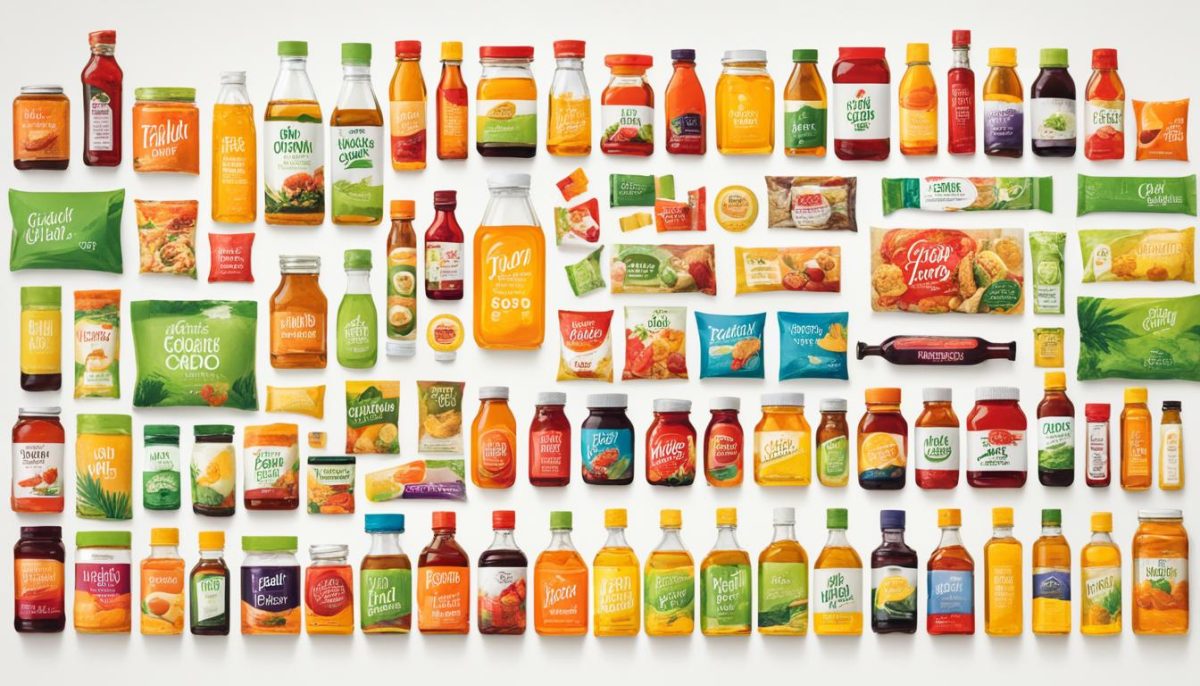Palm oil is a versatile ingredient that can be found in a wide variety of food products. From snacks and baked goods to spreads and condiments, palm oil is commonly used due to its unique properties and affordability. By understanding which food products contain palm oil, you can make informed choices about the products you consume.
Throughout this article, we will explore the role of palm oil in food production, highlight some common food products that contain palm oil, and discuss the potential impact of palm oil on both health and the environment. By gaining a deeper understanding of palm oil and its presence in our daily diet, we can make conscious decisions that contribute to a more sustainable future.
The Role of Palm Oil in Food Production
Palm oil plays a significant role in food production, making it a vital ingredient in the food industry. Its versatile properties and relatively low cost have made it a preferred choice for many food manufacturers. Let’s explore why palm oil is so widely used and how it contributes to various types of food products.
Palm oil is extracted from the fruit of oil palm trees and is known for its high yield. Its unique composition of saturated and unsaturated fatty acids gives it a solid consistency at room temperature, making it an ideal ingredient for processed foods. Palm oil’s stability and resistance to oxidation also improve the shelf life of products, reducing the need for additional preservatives.
In food production, palm oil serves multiple purposes. It is commonly used as a cooking oil due to its high smoke point and neutral flavor, making it suitable for frying, baking, and sautéing. It is also used as an ingredient in various food products, including:
| Food Product | Uses of Palm Oil |
|---|---|
| Bakery goods (e.g., cakes, cookies, pastries) | Palm oil adds moisture, texture, and extends shelf life. |
| Snack foods (e.g., chips, crackers, popcorn) | Palm oil provides a crispy texture and enhances flavor. |
| Spreads (e.g., margarine, peanut butter) | Palm oil gives spreads a smooth consistency and prevents separation. |
| Confectionery (e.g., chocolate, candy) | Palm oil contributes to the creamy texture and stability. |
| Dairy alternatives (e.g., non-dairy creamers, ice cream) | Palm oil adds richness and helps emulsify ingredients. |
Additionally, palm oil is used in the production of instant noodles, sauces, dressings, and many other processed foods. Its versatility makes it a valuable ingredient for creating various textures, stabilizing emulsions, and enhancing flavors.
However, the increasing demand for palm oil has raised concerns about its sustainability and environmental impact. In the next section, we will delve into the potential health effects of palm oil consumption and explore the environmental concerns associated with its production.
Common Food Products Containing Palm Oil
When it comes to the ingredients in our food, palm oil is one that often goes unnoticed. This versatile oil is extracted from the fruit of the oil palm tree and is widely used in the food industry for its unique properties. Let’s take a closer look at some of the most common food products that typically contain palm oil.
1. Processed Snacks: Many processed snacks such as chips, crackers, and cookies contain palm oil. It is often used to enhance texture and extend the shelf life of these products.
2. Baked Goods: Palm oil is commonly found in various baked goods like cakes, pastries, and bread. Its solid consistency at room temperature makes it a popular choice for creating flaky and moist pastries.
3. Spreads and Condiments: You’ll find palm oil in a variety of spreads and condiments, including margarine, peanut butter, and mayonnaise. Its smooth texture and high melting point make it ideal for achieving the desired consistency in these products.
4. Instant Noodles: Many brands of instant noodles rely on palm oil for flavor enhancement and to prevent the noodles from sticking together.
5. Chocolate and Confectionery: Palm oil is often used in chocolate and confectionery products to provide a creamy texture and prolong shelf life.
It’s important to note that while these are common examples, palm oil can be found in many other food products as well. Checking ingredient labels and opting for palm oil-free alternatives when possible can help you make conscious choices about your palm oil consumption.

The Impact of Palm Oil on Health and the Environment
The production of palm oil has significant implications for both health and the environment. It is important to understand the potential consequences of consuming palm oil and the effects of its production to make informed decisions that promote sustainability.
When it comes to health, palm oil consumption has been linked to various concerns. It is a high-calorie and high-fat ingredient, which can contribute to weight gain and increased cholesterol levels if consumed excessively. However, consuming palm oil in moderation, as part of a balanced diet, is not necessarily a cause for alarm.
The environmental impact of palm oil production is perhaps even more pressing. The expanding demand for palm oil has led to deforestation, particularly in tropical regions, affecting ecosystems and contributing to climate change. Additionally, the production process often involves unsustainable practices, such as the draining and conversion of peatlands.